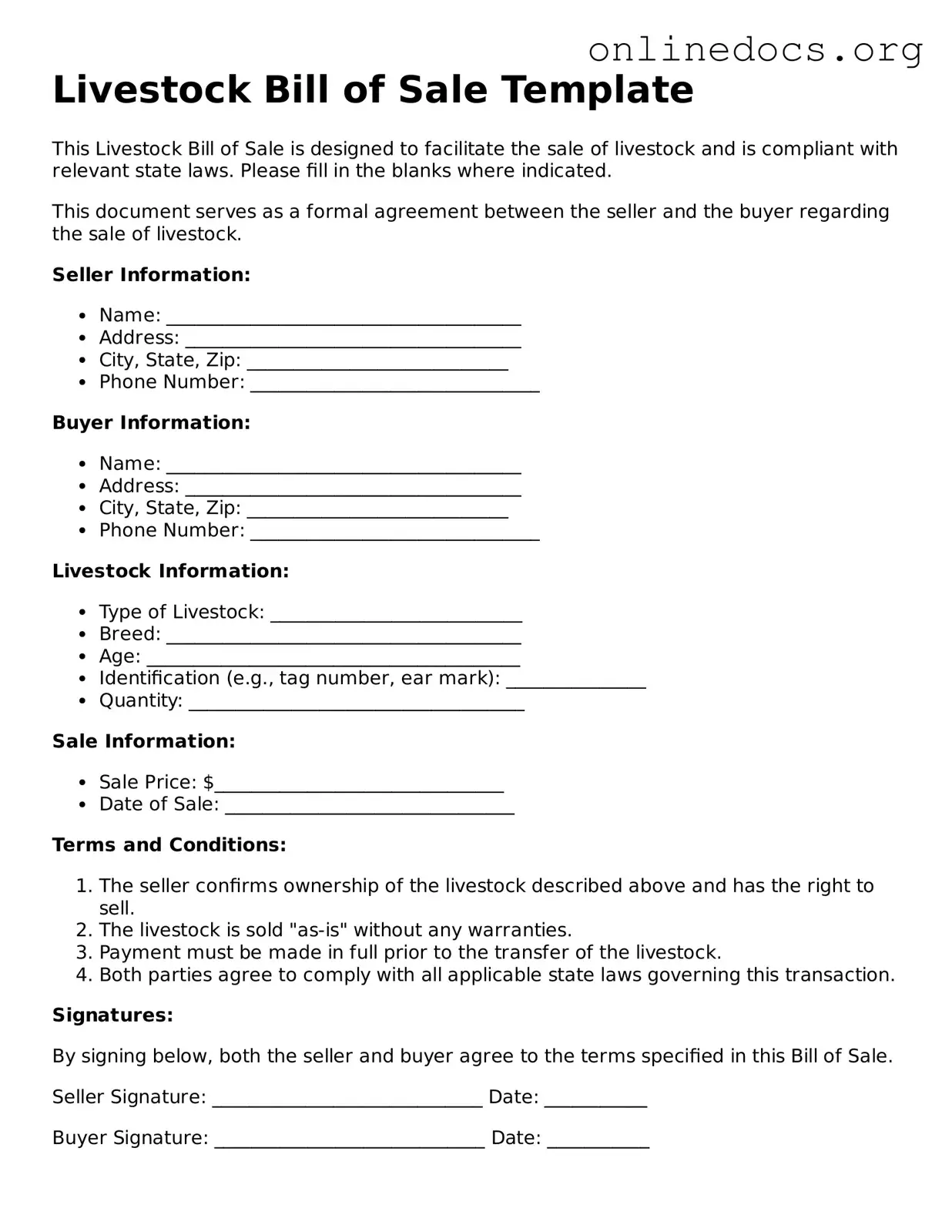The Livestock Bill of Sale form shares similarities with a Vehicle Bill of Sale. Both documents serve as proof of transfer of ownership. When a vehicle is sold, the seller provides a Bill of Sale to the buyer, detailing the vehicle's make, model, year, and identification number. Similarly, the Livestock Bill of Sale outlines the type, breed, and identification of the livestock being sold. Both forms protect the rights of the buyer and seller, ensuring that the transaction is legally recognized and documented. This is crucial for future reference, especially if disputes arise regarding ownership or condition.
Another document that resembles the Livestock Bill of Sale is the Real Estate Purchase Agreement. Like the Livestock Bill of Sale, this agreement is a legally binding contract that outlines the terms of a sale. It specifies the parties involved, the property details, and the sale price. Just as the Livestock Bill of Sale includes information about the livestock being sold, the Real Estate Purchase Agreement includes details about the property, such as its address and any conditions related to the sale. Both documents provide a clear record of the transaction, which is essential for both parties to avoid misunderstandings.
In addition to various types of bills of sale, a Texas RV Bill of Sale form is crucial for recreational vehicle transactions within the state, acting as a legal proof of purchase and ensuring the transfer of ownership is clearly documented. To learn more about this important document, visit legalformspdf.com for detailed information and resources that aid in protecting the interests of both buyers and sellers.
The Equipment Bill of Sale is another document similar to the Livestock Bill of Sale. This form is used when transferring ownership of equipment, such as tractors or farm machinery. It includes details about the equipment, such as its make, model, and serial number, much like the Livestock Bill of Sale does for animals. Both documents serve to protect the interests of the buyer and seller by providing a written record of the transaction. This is particularly important in the agricultural industry, where equipment and livestock are often significant investments.
A Sales Agreement for Personal Property also shares characteristics with the Livestock Bill of Sale. This document outlines the sale of various personal items, including livestock. It details the items being sold, the purchase price, and the terms of the sale. Both forms serve to confirm the transfer of ownership and provide legal protection to both parties. This clarity is essential, especially in transactions involving valuable assets, ensuring that both the buyer and seller are on the same page regarding the sale.
Lastly, the Pet Adoption Agreement is akin to the Livestock Bill of Sale in that it documents the transfer of ownership of an animal. While typically used for pets, this agreement details the animal’s health, breed, and any specific conditions of the adoption. Like the Livestock Bill of Sale, it serves to protect both the new owner and the previous owner by outlining responsibilities and expectations. Both documents emphasize the importance of proper care and ownership, highlighting the commitment involved in taking on an animal, whether it’s livestock or a pet.
